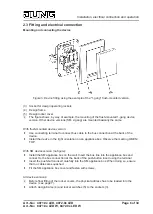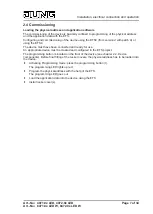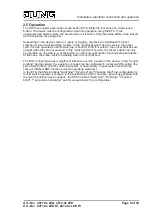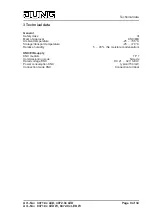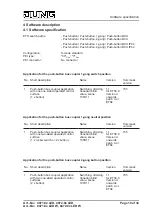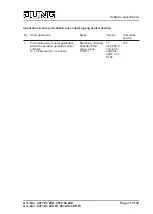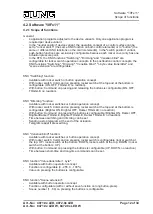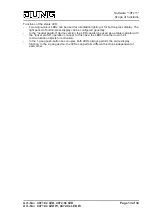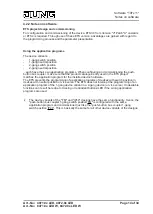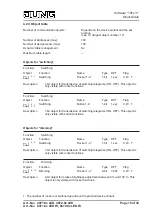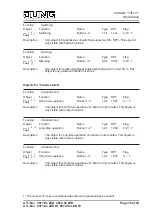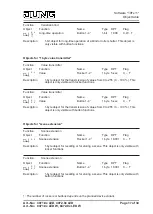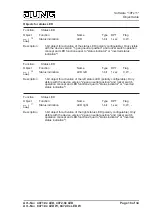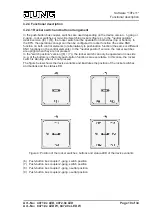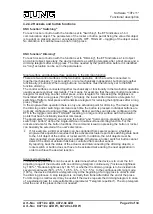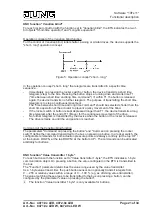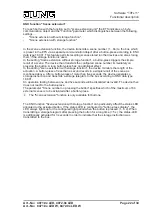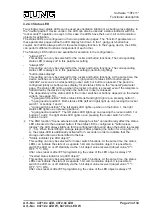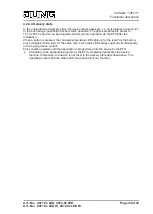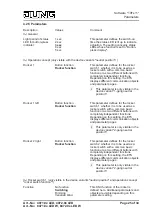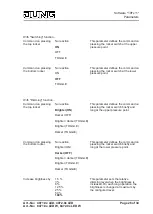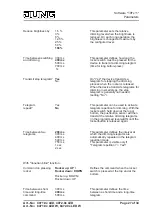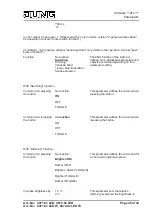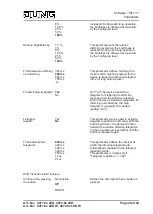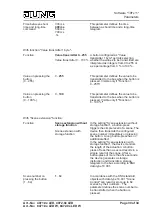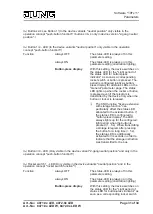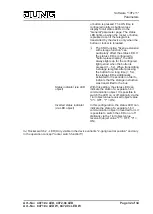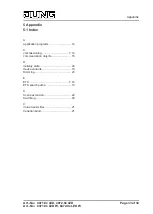
Art.-No.: 4071.0x LED, 4072.0x LED
Art.-No.: 8471.0x LED W, 8472.0x LED W
4.2.4.2 Rockers and button functions
KNX function "Switching"
For each rocker or button with the function set to "Switching", the ETS indicates a 1-bit
communication object. The parameters of the rocker or button permit fixing the value this object
is to adopt on pressing and / or on releasing (ON, OFF, TOGGLE – toggling of the object value).
No distinction is made between a brief or long press.
KNX function "Dimming"
For each rocker or button with the function set to "Dimming", the ETS indicates a 1-bit object
and a 4-bit object. Generally, the device transmits a switching telegram after a brief press and a
dimming telegram after a long press. The time needed by the push button before it is identified
as "long" actuation can be set in the parameters.
Single-surface and double-surface operation in the dimming function
There are two control surfaces in the two button operation, which are either connected to
together mechanically (1 rocker switch), or are mechanically independent, but belong together
functionally (2 buttons). When using buttons, two buttons must therefore by set to the KNX
function dimming.
The control surfaces connected together mechanically or functionally in the two button operation
usually execute contrary commands. This means, for example, that the upper button transmits a
telegram for switching on after a brief press, and a telegram for increasing the brightness is
transmitted after a long press ("Brighter"). Similarly, the lower button transmits a telegram for
switching off after a brief press and transmits a telegram for reducing the brightness after a long
press ("Darker").
In the single-surface operation there is only one actuation point for dimming. The device toggles
the dimming and/or switching command each time the button is pressed. Individual buttons are
normally configured to single-surface operation. Rocker switches can also be configured in the
ETS to the toggle command "TOGGLE" resulting in a large control surface with two actuation
points that have functionally identical commands.
The parameters "Command on pressing the button" and "Command on pressing the rocker
switch top / bottom" define the single-surface or double-surface dimming function. For the
rockers and also for the button functions, the command issued on pressing the button or rocker
can basically be selected at the user's discretion.
i
If, for example, a dimmer actuator can be controlled from several sensors, a faultless
single-surface operation requires that the activated actuator reports its switching state back
to the 1-bit object of the button or rocker switch. In addition, the 4-bit objects must be
interconnected via an identical group address. Otherwise, a rocker switch or button cannot
detect if the dimmer actuator has been controlled from another sensor.
By reporting back the status of the actuator and interconnecting the dimming objects, a
rocker switch or button does not have to be actuated twice during the next application in
order to achieve the desired reaction.
Advanced parameters
The advanced parameters can be used to determine whether the device is to cover the full
adjusting range of the actuator with one dimming telegram continuously ("Increase brightness
by 100 %", "Reduce brightness by 100 %") or whether the dimming range is to be divided into
several small levels (50 %, 25 %, 12.5 %, 6 %, 3 %, 1.5 %). In the continuous dimming mode
(100%), the device transmits a telegram only at the beginning of a long press in order to start
the dimming process. A stop telegram is normally then transmitted after the end of the press.
For dimming in small levels it may be useful if the device repeats the dimming telegram in case
of a sustained press for a presettable time (parameter "Telegram repetition"). The stop telegram
after the end of the press is then not needed.
Page 20 of 34
Software "10Fx11"
Functional description

